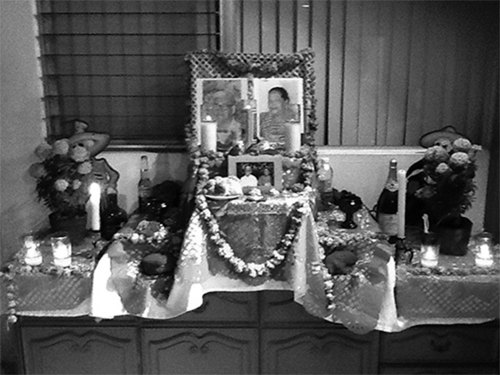All Saints’ Day, a celebration in Mexico intertwined with Dia de los Muertos, is a holiday where families gather to remember and pray for deceased family members. Although Dia de los Muertos, or Day of the Dead, is a celebration that mostly takes place in Mexico, its candy skulls and beautiful altars have spread to other countries in Latin America and neighboring U.S. states, such as Texas and Arizona.
Suffolk freshman Kawon Kim, who was raised in Mexico since the age of six, shared her experience with the holiday growing up in the city of Guadalajara.
“Dia de los Muertos is a very traditional activity in Mexico. Although the volume of the celebrations has diminished in recent years, schools still encourage students to take part in the traditional acts of painting colorful skulls or designing the perforated paper.”
Kim explains that places such as Oaxaca and Michoacan continue to hold large and colorful celebrations on the Nov. 1 every year, since they are areas that hold onto traditional customs better than larger Mexican cities.
“It’s a massive celebration, and also a very happy one. People build altars with pictures of their ancestors, decorate them with candles, and sometimes cook food that they enjoyed and place a plate for them on there, too,” Kim said.

(Photo courtesy of Wikimedia Commons)
Dia de los Muertos has also found its way to states that border Mexico, in part due to its geographical nearness and the large immigration that takes place in states such as Texas and Arizona, bringing in customs such as this.
Growing up in south Texas and with my extended family residing in Mexico, I was able to witness this celebration take place and blend between these two areas. In school, particularly in Spanish classes, we were usually tasked to color or paint skulls that we would later turn into masks to present. In the end of October, art classes can be found collecting newspapers and glue to create doll-like figures of La Calavera Catrina, or Catrina the Skeleton. Around the community, one can usually find candy stores selling carefully crafted and designed miniature skulls made of sugar, locally-owned Mexican restaurants can be seen decorated with the traditional papel picado, or perforated paper, and modest altars usually dedicated to family members of the owners of the establishment.
According to National Geographic, “Dia de los Muertos recognizes death as a natural part of the human experience, a continuum with birth, childhood, and growing up to become a contributing member of the community. On Dia de los Muertos, the dead are also a part of the community, awakened from their eternal sleep to share celebrations with their loved ones.”
Nov. 1 continues to be an important tradition in Latin America. Although the ways of celebrating it have changed, now including people sharing Facebook posts and tweets expressing how much they miss their grandparents or other family members, the act of remembering one’s ancestors still takes place.
“It is a day, at least symbolically, to spend with your ancestors,” Kim shared. “Legend goes that it’s a day where they can come from their world to ours.”







